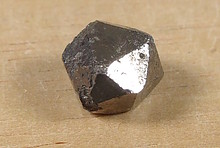Home PageAbout MindatThe Mindat ManualHistory of MindatCopyright StatusWho We AreContact UsAdvertise on Mindat
Donate to MindatCorporate SponsorshipSponsor a PageSponsored PagesMindat AdvertisersAdvertise on Mindat
Learning CenterWhat is a mineral?The most common minerals on earthInformation for EducatorsMindat ArticlesThe ElementsThe Rock H. Currier Digital LibraryGeologic Time
Minerals by PropertiesMinerals by ChemistryAdvanced Locality SearchRandom MineralRandom LocalitySearch by minIDLocalities Near MeSearch ArticlesSearch GlossaryMore Search Options
The Mindat ManualAdd a New PhotoRate PhotosLocality Edit ReportCoordinate Completion ReportAdd Glossary Item
Mining CompaniesStatisticsUsersMineral MuseumsClubs & OrganizationsMineral Shows & EventsThe Mindat DirectoryDevice SettingsThe Mineral Quiz
Photo SearchPhoto GalleriesSearch by ColorNew Photos TodayNew Photos YesterdayMembers' Photo GalleriesPast Photo of the Day GalleryPhotography
╳Discussions
💬 Home🔎 Search📅 LatestGroups
EducationOpen discussion area.Fakes & FraudsOpen discussion area.Field CollectingOpen discussion area.FossilsOpen discussion area.Gems and GemologyOpen discussion area.GeneralOpen discussion area.How to ContributeOpen discussion area.Identity HelpOpen discussion area.Improving Mindat.orgOpen discussion area.LocalitiesOpen discussion area.Lost and Stolen SpecimensOpen discussion area.MarketplaceOpen discussion area.MeteoritesOpen discussion area.Mindat ProductsOpen discussion area.Mineral ExchangesOpen discussion area.Mineral PhotographyOpen discussion area.Mineral ShowsOpen discussion area.Mineralogical ClassificationOpen discussion area.Mineralogy CourseOpen discussion area.MineralsOpen discussion area.Minerals and MuseumsOpen discussion area.PhotosOpen discussion area.Techniques for CollectorsOpen discussion area.The Rock H. Currier Digital LibraryOpen discussion area.UV MineralsOpen discussion area.Recent Images in Discussions
Mineralogical ClassificationDenisovite structure
12th Dec 2017 10:59 UTCMarco E. Ciriotti Manager
▪ Rozhdestvenskaya, I.V., Mugnaioli, E., Schowalter, M., Schmidt, M.U., Czank, M., Depmeier, W., Rosenauer, A. (2017): The structure of denisovite, a fibrous nanocrystalline polytypic disordered `very complex' silicate, studied by a synergistic multi-disciplinary approach employing methods of electron crystallography and X-ray powder diffraction. IUCrJ, 4, 223-242.
Abstract:
Denisovite is a rare mineral occurring as aggregates of fibres typically 200–500 nm diameter. It was confirmed as a new mineral in 1984, but important facts about its chemical formula, lattice parameters, symmetry and structure have remained incompletely known since then. Recently obtained results from studies using microprobe analysis, X-ray powder diffraction (XRPD), electron crystallography, modelling and Rietveld refinement will be reported. The electron crystallography methods include transmission electron microscopy (TEM), selected-area electron diffraction (SAED), high-angle annular darkfield imaging (HAADF), high-resolution transmission electron microscopy (HRTEM), precession electron diffraction (PED) and electron diffraction tomography (EDT). A structural model of denisovite was developed from HAADF images and later completed on the basis of quasi-kinematic EDT data by ab initio structure solution using direct methods and least-squares refinement. The model was confirmed by Rietveld refinement. The lattice parameters are a = 31.024 (1), b = 19.554 (1) and c = 7.1441 (5) A°, beta = 95.99 (3), V = 4310.1 (5) A°3 and space group P12/a1. The structure consists of three topologically distinct dreier silicate chains, viz. two xonotlite-like dreier double chains, [Si6O17]10, and a tubular loop-branched dreier triple chain, [Si12O30]12. The silicate chains occur between three walls of edge-sharing (Ca,Na) octahedra. The chains of silicate tetrahedra and the octahedra walls extend parallel to the z axis and form a layer parallel to (100). Water molecules and K+ cations are located at the centre of the tubular silicate chain. The latter also occupy positions close to the centres of eight-membered rings in the silicate chains. The silicate chains are geometrically constrained by neighbouring octahedra walls and present an ambiguity with respect to their z position along these walls, with displacements between neighbouring layers being either z = c/4 or c/4. Such behaviour is typical for polytypic sequences and leads to disorder along [100]. In fact, the diffraction pattern does not show any sharp reflections with l odd, but continuous diffuse streaks parallel to a* instead. Only reflections with l even are sharp. The diffuse scattering is caused by (100) nanolamellae separated by stacking faults and twin boundaries. The structure can be described according to the order–disorder (OD) theory as a stacking of layers parallel to (100).




Mindat.org is an outreach project of the Hudson Institute of Mineralogy, a 501(c)(3) not-for-profit organization.
Copyright © mindat.org and the Hudson Institute of Mineralogy 1993-2024, except where stated. Most political location boundaries are © OpenStreetMap contributors. Mindat.org relies on the contributions of thousands of members and supporters. Founded in 2000 by Jolyon Ralph.
Privacy Policy - Terms & Conditions - Contact Us / DMCA issues - Report a bug/vulnerability Current server date and time: April 26, 2024 22:54:39
Copyright © mindat.org and the Hudson Institute of Mineralogy 1993-2024, except where stated. Most political location boundaries are © OpenStreetMap contributors. Mindat.org relies on the contributions of thousands of members and supporters. Founded in 2000 by Jolyon Ralph.
Privacy Policy - Terms & Conditions - Contact Us / DMCA issues - Report a bug/vulnerability Current server date and time: April 26, 2024 22:54:39











